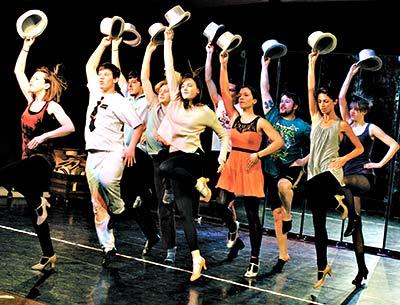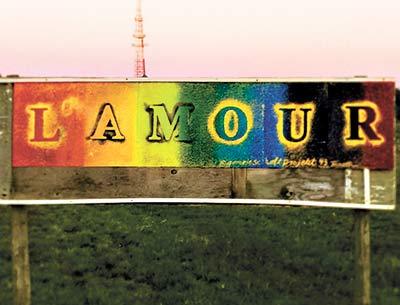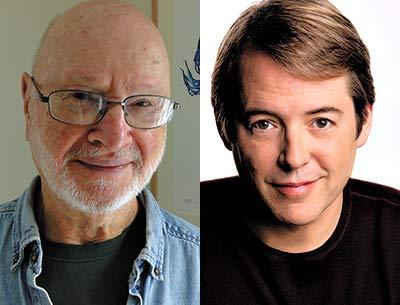Star Gardener: Spring Is on the Way, So Far, So Good
Star Gardener: Spring Is on the Way, So Far, So Good

The flowers on the witch hazels opened within a few days of the temperature rising above freezing. One large clump of crocuses that had begun flowering in January before the blizzard resumed blooming as if six weeks of bitter cold and continuous snow had never happened. As the snow recedes the buds of the early crocuses and snowdrops are pushing out and need only a little sunshine to open.
The abnormal cold and thick snowpack of late February and early March were worse for man and beast than for our gardens and landscapes. Spring flowering will probably be extravagant and lush, weather cooperating, as the early bloomers play catch-up and the longer days and higher temperatures work their magic on later-flowering plants.
The snow cover insulated and protected root systems, plants, and bulbs. The worst of the winter damage will be primarily from branches broken by the heavy snowpack and from de-icing salts. Although most of the shrubs in my garden are still under snow, broken and split branches are emerging as the snow recedes. Good arborists can wire and screw branches together so they will heal; contact your arborist if there are branches you want to save. If not, this is a good time to prune, while plants are still dormant.
Evergreens are more prone to winter damage from desiccating winds than deciduous trees and shrubs. Mina Vescera, nursery and landscape specialist at Cornell Cooperative Extension in Riverhead, strongly advises waiting until June to see if plants recover before removing them or cutting out the damaged parts. Some damage may not become evident until then, too.
Leyland cypress, widely planted for privacy screening, is especially problematic and may show winter burn. While garden centers, nurserymen, and landscapers may not be happy, Ms. Vescera recommends spring planting for conifers and evergreens, to give them time to settle in before winter.
Broadleaf evergreens can take a beating from winter winds, too. The leaves of some rhododendrons, cherry laurels, and mahonias are prone to desiccation. Let nature take its course and new leaves will grow. Do not be in a rush to cut the bushes back. My motto is, when in doubt, wait. (Except when a plant begins to make you nuts, like that skimmia I see in the back with its top covered with tawny, dead leaves. They will definitely be pruned out on my first inspection after the snow melts.)
Large-leaf hydrangeas will likely take a hit for the second consecutive year. Last April, a sudden drop in temperature killed the buds on our iconic mophead hydrangeas. Marginally hardy, bushes went into winter in vulnerable condition. It will be awhile before we can see whether the buds and branches made it, but temperature fluctuations over the next month can also do serious damage.
This might be an opportunity to rethink hydrangeas. Mountain hydrangeas, H. serrata, are hardier and smaller than H. macrophylla, the traditional mopheads and lacecaps. Two mountain cultivars, Blue Billow and Blue Bird, are especially reliable and showy. Blue Bird begins to flower in mid-June most years, and as the season progresses the blue turns to ruby, as do the leaves.
If you can use white mopheads, the native arborescens cultivars, Annabelle and Incrediball, are good selections. They take more sun than the macrophyllas, and are pruned back to the ground, flowering on new wood and eliminating the problem of late frosts. The paniculatas, commonly referred to as PeeGees, are also hardy and sun-loving. There’s been a rash of new cultivars, of which Limelight and Pinky Winky are becoming popular.
Spreading salt on roads, driveways, and walkways was a necessity this winter as the ice grew thicker and thicker. Usually, normal rainfall removes the residue after the thaw arrives, and last Saturday’s rain was bountiful. However, a lot of snow remained along the roadsides. Depending on the weather after the snow melts, raking, removing any leftover salt, and flushing the grass and plantings along the road may be a good idea. This tip holds true for street trees as well.
Robin Simmen, Cornell Extension community horticulture specialist, recommends removing and replacing mulch from plantings near the road. Instead of putting the old material in this year’s compost pile, she suggests keeping it separate while salt residues leach out.
Boxwood, unfortunately, is not salt-tolerant and can be affected by salt spray as well as salt in the soil. You can always have the soil tested for pH and soluble salt levels at Cornell to determine whether or not flushing is necessary. If I had boxwood near the road, I would probably be conservative and just go ahead changing the mulch, spraying the leaves thoroughly, and flushing the soil with a hose, not the irrigation system. And I’d do it on a sunny day. Boxwood is susceptible to fungal diseases and it would be better for the moisture to dry off before night.
Snow cover is also problematic for grass. As the snow melts and temperatures drop at night, the moisture has turned to ice just above the grass. Tamson Yeh, the turf and pest management specialist at Cornell, points out that grass can begin to respire and be damaged under the warmth of ice insulation. Before the grass breaks dormancy she recommends trying to help it dry out as early as possible. Break up the ice, remove the snow and ice, and either mow or lightly rake the grass.
When I spoke with her a week ago, she said conditions had already been right for snow mold and red thread, two fungal diseases, hence the need to dry out the grass crowns. We’ll probably notice them in the next week or two. The affected grass will be unattractive and will take awhile to grow out, but it will.
We were actually lucky this winter. The snow was mostly light powder, so breakage was under the snowpack. Now we need to keep our fingers crossed that the snow continues to melt and the soil dries out, saving the crowns of perennials and grasses. And to hope there aren’t dangerous fluctuations in temperature over the next month that can damage plants that have begun to break dormancy and put out new soft growth.





